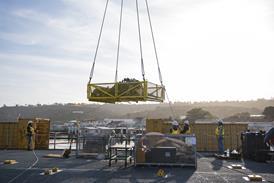The US Federal Aviation Administration and the Netherlands Directorate General of Civil Aviation (DGCA) have signed an agreement to co-operate on local area augmentation system (LAAS) research and development.
Using LAAS, which will augment the accuracy and integrity of global positioning system (GPS) signals, approaches can be designed to avoid obstacles, restricted airspace and noise sensitive areas. The Netherlands DGCA is particularly interested in LAAS potential at Amsterdam Schiphol Airport, where noise abatement is a key issue. The FAA and the DGCA will share information to expedite LAAS development.
Earlier this month, the FAA signed agreements with Honeywell and Raytheon Systems on LAAS developments for use in the US National Airspace System.
Separate teams led by Honeywell Airport Systems and Raytheon Systems are competing to provide the FAA with up to 143 LAAS ground systems. With installations outside the USA, the market potential for LAAS suppliers could exceed $1 billion, say industry estimates.
Supplementing the wide area augmentation system (WAAS), now being developed by Raytheon, LAAS will allow GPS to be used as the sole source of navigation. LAAS will replace 40-year-old instrument landing systems.
Honeywell and Raytheon have partnered airports, airlines and avionics companies, including AlliedSignal, Rockwell Collins and Sextant Avionique.
LAAS development will be in three stages, with the first two phases to include development, production and field testing of Category 1 LAAS equipment, leading to development of the more complex Cat 2/3 LAAS system.
The FAA will initially install LAAS at 31 US airports requiring Cat 1 capabilities. LAAS will later be installed at 30 sites which are candidates for Cat 2/3 instrument landing systems (ILS). Chicago O'Hare for example, will replace 12 sets of ILS equipment with one LAAS installation.
Source: Flight International























